Driving Performance in Every Stage of the Product Lifecycle
 In the constantly evolving world of pharmaceutical products, motivating a salesforce to remain engaged in the detailing of a product throughout the product lifecycle can be a challenge. To address this issue, some companies have developed product lifecycle management strategies to reward and encourage sales representatives and support staff.
In the constantly evolving world of pharmaceutical products, motivating a salesforce to remain engaged in the detailing of a product throughout the product lifecycle can be a challenge. To address this issue, some companies have developed product lifecycle management strategies to reward and encourage sales representatives and support staff.
Typically, pharmaceutical reps look to the next launch as their opportunity to refresh relationships with physicians, and may find it difficult to be enthusiastic and motivated as products age. It is thus a challenge for pharmaceutical companies to keep their sales forces engaged and effectively detailing a product throughout its lifecycle. A product lifecycle management (PLM) strategy that rewards sales reps as well as support staff can maximize sales as well as encourage greater cooperation, collaboration, and planning between the reps and research, marketing, manufacturing, and finance.
Involvement Leads to Motivation
When sales and support teams have some ownership of the sales process, they work more effectively in establishing the brand, expanding the market by challenging competitive efforts, and providing valuable clinical results during all commercialization stages of a product’s lifecycle. Involving sales in PLM may also be motivational—a significant benefit at a time when companies are asking how to motivate sales representatives to do more and to do it more effectively. One bio-science company recognized the value of engaging all employees in examining existing methods and rewarding innovative ideas. Employees were encouraged to organize into small, cross-functional teams. They were asked to submit ideas that would result in cost savings for the company. The result: 3,000 employees participated in the problem-solving exercise, submitting 1,200 ideas in 12 weeks. The company reaped a return on investment of more than 4:1.
Companies like this are looking for ways to tap the experience and expertise of their best people, and to engage and motivate the entire organization. Inherent in this discussion is determining what drives people and what processes can be followed to improve performances.
Case in Point. A major pharmaceutical company identified the need to improve overall sales effectiveness. The organization had been running a variety of sales contests over the years with success, but increased regulatory pressures, demand for team selling, and physician education necessitated a different approach to support the traditional efforts. The company brought together a group of its top performers and asked them what they were doing right. Based on their responses, a list of prime performance criteria was created and prioritized. Associated metrics were identified and standards established. Both middle and senior management reviewed the recommendations, made adjustments, and approved the approach. The result was a plan that evaluates individual performance in a variety of categories, with multiple measurements in each. The measurements go beyond traditional tracking of volume or market share and allow management to view individual performance through a variety of metrics. Within the first two quarters, an improvement across the entire sales force was realized, beyond the typical top 10% to 20%.
The Universal Need for Recognition
Feeling appreciated is high on the list of factors contributing to employee satisfaction and is more important than most managers realize. Managers often assume they know what motivates their employees, but there is a gap in what employees want from their jobs and what managers, and therefore organizations, interpret to be those needs. Managers may perceive these “wants” to be compensation, job security, and career opportunities, in that order. However, most employees want appreciation, information on and involvement in the direction of the organization, consideration of personal issues, and work-time flexibility. With further understanding of what motivates individuals, tools to support their efforts, and the authority to act, managers are positioned to respond to employee needs and turn dissatisfaction into satisfaction.
Furthermore, evidence shows that employee satisfaction is not only personally pleasing but may influence an organization’s success. A direct link bonds employee satisfaction levels and customer satisfaction levels to an improved bottom line.
The reward and recognition that increases satisfaction and therefore improves performance includes compensation plans and entitlements as well as other forms of appreciation. Two types of rewards exist: (1) intrinsic and (2) extrinsic. Intrinsic rewards are part of the job itself, such as responsibility, challenge, and feedback. Extrinsic rewards are external to the job, such as pay, promotion, fringe benefits, or tangible awards.
Reward plans must be constructed within the context of the total rewards strategy. To be effective, rewards must reflect the priorities of the organization and the employee. The rewards must be valued by the participant, and the effort required to achieve it must be perceived as fair. The total rewards strategy embraces everything that an employee values in the employment relationship.
Rewards can be either financial or non-financial. Financial rewards tend to be transactional in nature, less emotional, less discretionary, and over time, become entitlements. Value is directly correlated to cost. Non-financial, or noncash, rewards are relational in nature. They create top-of-mind awareness and bring high emotional value. This type of reward can be given and taken away without adversely affecting compensation. They connect with aspirational value, acknowledgment, appreciation, and attribution. Value attributed to noncash rewards can be perceived as greater in value than the cost.
Case in Point. Participants were given the choice of earning rewards either through a non-cash points system, redeemable for merchandise and travel services, or taking the reward in cash. Only 10% chose the cash option. Program communications were able to promote the non-cash options, the choice was broad enough to appeal to everyone, and participants perceived a better return on their performance with this type of reward.
Developing a Reward Plan
Regardless of the audience size or magnitude of the investment during the development of a reward plan, addressing certain questions can align the factors that influence people. When these questions are answered consistently, the result is a focused, capable, and motivated employee. It is important for a company, to include multiple variables when evaluating and designing a performance improvement program. Focusing on just one variable, such as training or rewards, is less effective than focusing on several variables. To answer the five questions, consideration must be given to communication, training, measurement, feedback, and rewards.
What Should the Employee Do?
High-performing companies have strong organizational cultures where the mission, vision, and performance of the organization are constantly reinforced from top management on down. Equally important is the flow of information from the employees to the organization. This upward communication flow is critical to staying in touch with the business. The most powerful influencer of employee understanding of organizational direction is the employee’s immediate manager. The manager focuses on employee performance and development, providing regular formal coaching sessions, creating individual development plans, and delivering personal feedback. It is critical that the manager is included in reward plan development and implementation.
Why Is It Important
This requires communication of the behaviors that create the desired success. It is best to keep the message simple, communicate it clearly and frequently, continuously promote the opportunity, use creativity to keep the message fresh, and provide a feedback mechanism.
How Should the Employee Do It?
A key factor that determines individual performance is competence. Answering the first two questions has little effect if ability is lacking. In fact, it drives frustration. Winning performance improvement approaches include pertinent learning support, which combines strong content, sound instructional design, engaging graphics, and effective forms of delivery and evaluation.
How Will the Employee Know How He or She Is Doing?
Organizations use many measures to analyze performance, including formal measurement of business results, sales performance, return on investment, customer satisfaction, employee satisfaction, adherence to procedures, professional development, and completion of individual development plans. Comprehensive measurements enable management to identify strengths, best practices and areas for improvement, and to determine whether objectives are being achieved. These measures not only keep employees engaged and focused on the goal, but allow a fair and frequent means to reward and recognize improved performance.
Case in Point. An organization had an established process for soliciting ideas from employees but none to track implementation of the innovations. A reporting system was developed that monitored progress against milestones and rewarded the teams at critical steps along the way. The result was a motivated workforce, performing in alignment with key business drivers for the organization.
What Is the Benefit for the Employee?
Individuals are motivated by different things, so it is valuable to understand what drives behavior, and to align appropriate forms of rewards and recognition. The following reward system– effectiveness model (based on a joint project between AT&T and Maritz, Inc.) helps to identify key drivers, and maximize the motivating effectiveness of the plan:
Effectiveness = Direction X
To be effective, a reward and recognition plan must be aligned with two components: (1) direction and (2) power. Direction communicates what the organization wants and is directly tied to the business objectives and desired culture. The power component means an award must have an effect and energize the participants. Three variables influence a reward’s power: (1) salience, (2) value, and (3) performance.
Case in Point. A pharmaceutical company wanted recognition and reward tools that identified the organization hierarchy and allowed for recognition by managers. Great care was taken to empower managers with tools that allowed for a variety of rewards and recognition needs, from individual to team achievements. The approach provided the ability to communicate one on one or in groups. This communications tool met the direction criteria by empowering management with a convenient, effective means to deliver messages. The power criterion is met through communications, tracking and feedback, a reward with value, and management-driven performance expectations and parameters.
Performance Improvement and the Product Lifecycle Management Strategy
The pharmaceutical industry works from a business model that does not always address current levels of industry change or the best use of human resources. A more integrated approach to PLM is required. Addressing factors that positively change behavior is a critical component to a successful strategy.
Management at all levels plays a vital role in embracing shared company objectives and strategies, and providing a clear mission. It requires an organization wide view; an understanding of behavior drivers and the key components of an effective performance improvement strategy; and strong relationships and information sharing with sales, research and development, finance, manufacturing, and marketing. Pharmaceutical organizations need to actively support collaborations that challenge employees to be curious and develop new perspectives to develop ownership at all levels. Employees and teams need to believe in the brands and be motivated. Organizations need to encourage thought-leadership; push for more innovation plans, and seek clear, accurate product positioning.
By effectively communicating, educating, establishing performance expectations, and responding with appropriate recognition and rewards, performance improvement initiatives can drive improved performance at all levels of an organization, during all phases of the product lifecycle.

